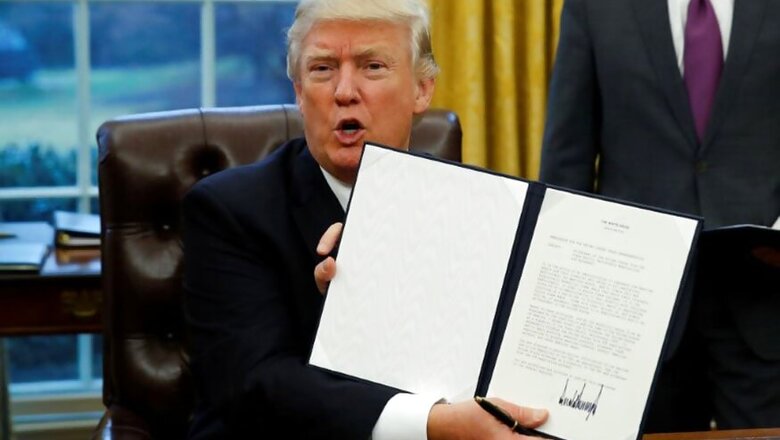
views
Washington: U.S. President Donald Trump has asked his trade advisers to look at rejoining the Trans Pacific Partnership, a multinational trade pact he withdrew the United States from last year, White House spokeswoman Lindsay Walters said.
Republican senators met with Trump on Thursday and he told them that he has asked United States Trade Representative Robert Lighthizer and White House economic advisor Larry Kudlow to re-open negotiations.
"The president has consistently said he would be open to a substantially better deal, including in his speech in Davos earlier this year," Walters said.
The TPP had aimed to cut trade barriers in some of the fastest-growing economies of the Asia-Pacific region and to counter China's rising economic and diplomatic clout. Trump pulled the U.S. out of the pact in early 2017, citing concerns about jobs.
Even prior to Trump's official withdrawal, U.S. participation in the pact was dead due to opposition in the U.S. Congress. The United States entered the TPP negotiations in 2008 and took until late 2016 for the then-Obama administration to abandon its attempt to push the pact through Congress.
"It is good news that today the president directed Larry Kudlow and Ambassador Lighthizer to negotiate U.S. entry into TPP,” Senator Ben Sasse, a pro-trade Republican, said in a statement after the meeting between Trump and the senators.
At his Senate confirmation hearing for the post of Trump's next secretary of state, CIA Director Mike Pompeo was asked about reports that Trump planned to re-engage on TPP and replied: “That news was news to me.”
However, Pompeo said he had supported TPP as a member of Congress and added: “There is an economic component to what China is trying to do. We need to be engaged. There is a diplomatic component to the economic activity as well. We need to be deeply engaged there, and I’m confident this administration will do that."
Since the U.S. withdrew from the TPP talks, the other 11 countries have forged ahead with their own agreement, and in the process eliminated chapters on investment, government procurement and intellectual property that were key planks of Washington's demands.
The pact includes Mexico and Canada which are renegotiating the terms of the North American Free Trade Agreement with the United States.
When asked to comment on Thursday's comments on the TPP, a Canadian government official said there had not been any formal outreach so it was not possible to speculate on what a new pact would look like.
Japanese Prime Minister Shinzo Abe will meet Trump next week. Japan, a close U.S. ally, signed up for the 11-country trade pact.
During his election campaign in 2016, Trump was frequently sceptical of the value of multilateral trade pacts, arguing instead that bilateral deals could offer better terms.
But Trump is struggling to get support from other countries for his recent threat to impose import tariffs on China and the U.S. farm lobby is arguing that retaliation by China would hit American agricultural exports.



















Comments
0 comment